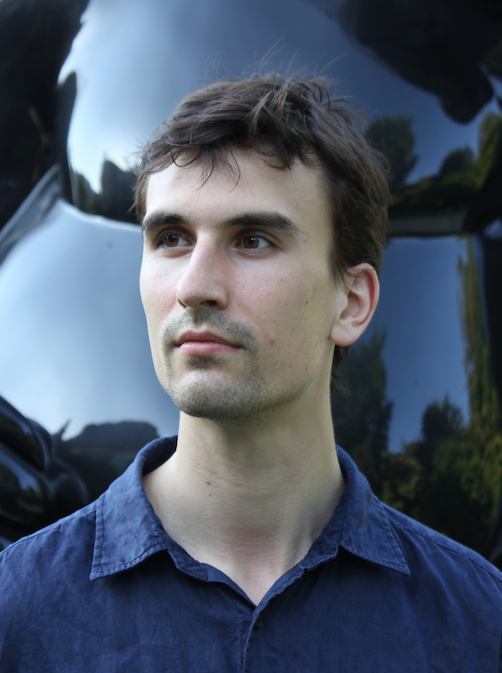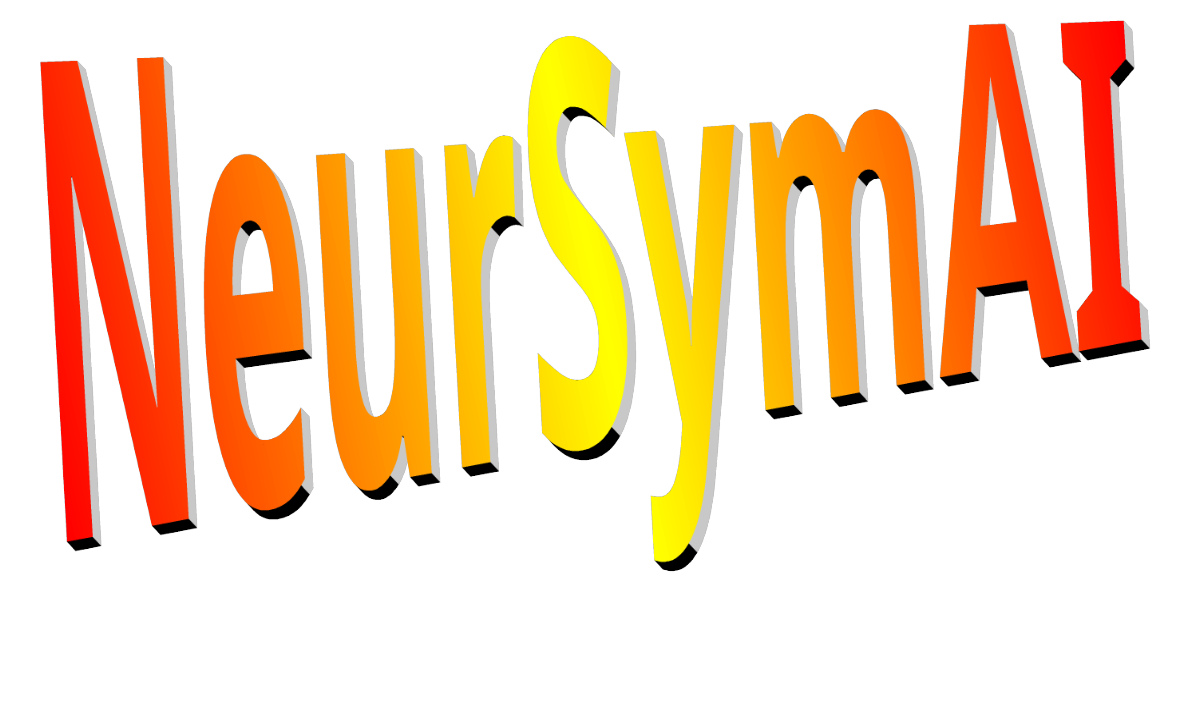
|
Telecom Paris
Dep. Informatique & Réseaux  Nils Holzenberger
← Home pageJanuary 2026
Nils Holzenberger
← Home pageJanuary 2026 |

 Logic, Knowledge Representation and Probabilities
Logic, Knowledge Representation and Probabilities
| with | Samuel Reyd |

|

Summary
Formal logic and automatic theorem proving

Proof by refutation
Prolog and refutation
Resolution algorithm
- negate the formula to prove
- transform it to CNF (conjunctive normal form)
- add new clauses produced from the previous ones using resolution
(this does not modify the truth conditions of the set) - attempt to reach the empty clause, which proves that the negated formula is unsatisfiable.
For example, consider the following set of clauses:
- [a, ¬b, ¬c]
- [c, ¬e]
- [¬b, e]
- [d]
- [¬d, b]
a :- b, c.
c :- e.
e :- b.
d.
b :- d.This program can prove a:
?- a.
True Let us translate the underlying functioning in Robinson’s terms. The resolution algorithm consists in "annihilating" two opposing terms when two clauses are concatenated. For example, the proposition ¬c in clause 1, [a, ¬b, ¬c] "annihilates" with c in clause 2: [c, ¬e] to give a new clause [a, ¬b, ¬e]. This new clause can be added to the set without modifying its satisfiability.The idea of the resolution can be paraphrased as:
- clause 2 says that if e is true, c is true.
- clause 1 says that if c is true, (a∨¬b) is true.
- So if e is true, (a∨¬b) is true.
which is what the resolving clause [a, ¬b, ¬e] means.
- a sequence is a conjunction of lines
- a line is a generalized disjunction (clause)
- growth of the sequence:
- if a clause reads as [... β...], insert a new line: [[...β_1, β_2 ...]
- if a clause reads as [... α ...], insert two new lines: [... α_1 ...] and [... α_2 ...]
- add new lines by replacing ¬¬X by X, ¬⊤ by ⊥ and ¬⊥ by ⊤
- resolution: from lines [... X ...] and [... ¬X ...] create the line [... ... ... ...], i.e. concatenate the lines leaving aside all occurrences of X and of ¬X)
- a proof of X by resolution is a sequence including the [¬X] line (goal) and containing an empty clause [ ].
- X is a tautology if and only if X has a proof by resolution.
In other words, X is a tautology if and only if a sequence growing from [¬X] contains the empty clause [ ]).
|
Using the resolution algorithm, prove that:
(((A ⊃ B) ∧ (B ⊃ C)) ⊃ ¬(¬C ∧ A)) To do so, start from an single clause containing the negation of the formula to prove. |
|
Show that if S ∪ {X} ⊢ Y, then S ⊢ (X ⊃ Y).
(after answering, read the proof of the reciprocal in the solution). |
Soundness and Completeness
|
Write a automatic prover based on resolution, building upon the predicate cnf used last week. Start from: prove(F) :- cnf([[ -F ]], CNF), write('CNF of -'), write(F), write(' = '), write(CNF), nl, resolve(CNF). We need to write the predicate resolve: resolve(CNF) :- member([ ], CNF), write('This is a true formula'), nl. resolve(CNF) :- write('Examining '), write(CNF), nl, get0(_), % waits for user action select(C1, CNF, _), % forgetting this parent clause select(C2, CNF, RCNF), % keeping this parent clause . . . % user 'remove' from cnf programThe predicate resolve has to extract two clauses C1 and C2 from CNF, then to extract P and -P respectively from these two clauses, then to recall itself after having added the concatenation of the remaining parts of these two clauses to CNF (it is recommended to forget one of the two parent clauses). Evidently, the presence of the empty clause has to be checked, and, in the affirmative case, stop.Try it on ((a ⊃ (b ⊃ c)) ⊃ ((a ⊃ b) ⊃ (a ⊃ c))). /* TEST */ go :- prove( ((a imp (b imp c)) imp ((a imp b) imp (a imp c))) ).Normally you have to remove all occurrences of P and of -P from the clauses. What do you think about the risks of entering in loops? Which remedies would you think of? |
Predicate logic (first order logic)
A logic for predication
(∀x) (∀y) (∀l1) (∀l2) ((s(x, l1) ∧ (s(y, l2) ∧ (∃z) (s(z, l1) ∧ s(z, l2)))) ⊃ c(x, y))x, y, z refer to persons; l1, l2 to languages; s(x, l) is a predicate standing for "x speaks l", c(x, y) for "x communicates with y". Negated version:
(∃x) (∃y) (∃l1) (∃l2) ((s(x, l1) ∧ (s(y, l2) ∧ (∃z) (s(z, l1) ∧ s(z, l2)))) ∧ ¬c(x, y))This negated formula reads: "There are two individuals who do not communicate despite the existence of an interpreter"
It makes sense!
Syntax
- Terms are variables x1, x2, ... ; constants c1, c2... ; or functors f(t1,..., ...xn), where n is the arity of the functor and ti are terms. A closed term is a term without variables.
- An atomic formula has the form p(t1, ...tn), where p is a predicate of arity n and ti are terms. The sets {xi}, {ci}, {f},{p} are given once, and form the language signature.
- A formula is:
- An atomic formula
- ¬F, where F is a formula
- (F o G), where F and G are formulas and o a binary connective of propositional logic
- (∀x) F or (∃x) F, where x is a variable and F is a formula.
Semantics
- We are given a non-empty set D called domain.
- An interpretation I associates each constant c of the language with an element cI of D, each functor f of arity n to a function fI from Dn to D; each predicate P of arity n to a n-ary relation PI in D.
- An assignment A instantiates each variable v by giving it a value vA taken from D.
- Terms are interpreted recursively from the interpretation of their elements: for each term t, tI,A is defined as:
- cI for a constant c,
- vA for a variable v,
- fI(t1I,A, t2I,A,... tnI,A) for a functional term f(t1, , ...tn).
- A model M(D, I) is defined by the domain D and the interpretation I.
| Give two different models for a language with the constants {a, b, c}, the binary predicate ‘<’ and the ternary predicate ‘+’. |
Attitudes (truth conditions)
- P(t1, , ...tn)I,A = T if and only if (t1I,A, t2I,A,... tnI,A) ∈ PI
- ⊤I,A = T ; ⊥I,A = F
- (¬XI,A) = ¬XI,A
- (XoY)I,A = XI,A • YI,A for coupled operators o and • (cf. propositional logic)
- ((∀x) F)I,A = T if and only if FI,B = T for all assignations B equal to A save for x.
- ((∃x) F)I,A = T if and only if FI,B = T for (at least) one assignation B equal to A save for x.
- A formula F is true in M(D,I) if FI,A = T for all assignments A.
- A formula F is valid if F is true in any model of the language.
- A set S of formulas is satisfiable in M(D, I) if there is (at least) an assignment A such that FI,A = T for all F belonging to S.
S is satisfiable if S it is satisfiable in a model.
Note that a formula F is valid if and only if {¬F} is not satisfiable.
| Give a model for a language consisting of the constants {a, b, c} and the ternary predicate ‘+’ in which (∀x) +(x, a, x) is valid (x is a variable). Give another model in which the same formula is not valid. |
|
What do you think of:
((∀x) (∃y) P(x, y)) ∧ ((∀x) (∃y) ¬P(x, y)) |
Proof by refutation in predicate logic
Implementation of resolution in FOL
- ¬(∃x) A(x) ≡ (∀x) ¬A(x)
- ¬(∀x) A(x) ≡ (∃x) ¬A(x)
- ((∀x) A(x) ∧ B) ≡ (∀x) (A(x) ∧ B) we suppose that B does not depend on x
- (A ∧ (∀x) B(x)) ≡ (∀x) (A ∧ B(x)) we suppose A does not depend on x
- ((∃x) A(x) ∧ B) ≡ (∃x) (A(x) ∧ B)
- (A ∧ (∃x) B(x)) ≡ (∃x) (A ∧ B(x))
- ((∀x) A(x) ⊃ B) ≡ (∃x) (A(x) ⊃ B) warning: the antecedent of ⊃ includes a negation
- (A ⊃ (∀x) B(x)) ≡ (∀x) (A ⊃ B(x))
- ((∃x) A(x) ⊃ B) ≡ (∀x) (A(x) ⊃ B) warning: the antecedent of ⊃ includes a negation
- (A ⊃ (∃x) B(x)) ≡ (∃x) (A ⊃ B(x))
Writing a formula in prenex form is a non-deterministic procedure. A good practice is to get existential quantifiers to the leftmost possible positions. The method then consists in eliminating all the quantifiers. Let’s start with the existential ones. To eliminate the ‘∃’ in the formula, we use "Skolem functions". Skolem functions are necessary because existential variables may be under the scope of universal quantifiers. The existential quantifier and the corresponding variable are replaced by a function that notes variable dependencies.
- skolemization: a formula in prenex form (Q1x1) (Q2x2) ...(∃xk)...(Qnxn) F is transformed into (Q1x1) (Q2x2) ... ...(Qnxn) F(xk/ f(x1, x2 ...xk-1)) where f is a new functor that does not belong to the language. The two formulas have the same truth conditions. f(x1, ...xk-1)) is called a Skolem function.
- The use of Skolem functions ensures that any formula F with no free variables (i.e. without not quantified variables) can be mapped to a formula G in prenex form with only universal quantifiers such that F is satisfiable if and only if G is satisfiable.
(this amounts to transforming the associated quantified variables into free variables)
- [¬((∀x) (P(x) ∨ Q(x)) ⊃ ((∃x) P(x) ∨ (∀x) Q(x)))] we start from the negated formula (refutation)
- [(∀x) (P(x) ∨ Q(x))] (development of 1. (α-rule).)
- [¬((∃x) P(x) ∨ (∀x) Q(x))] (development of 1. (α-rule).)
- [¬(∃x) P(x)] (development of 3. (α-rule).)
- [¬(∀x) Q(x)] (development of 3. (α-rule).)
- [¬Q(c)] (a version of 5. (c = constante de Skolem).)
- [¬P(x))]) (= 4. freed from univeral quantifier.)
- [(P(x) ∨ Q(x))] (= 2. freed from univeral quantifier.)
- [P(x), Q(x)]) (modification of 8. (β-rule).)
- [Q(x)] (resolving clause of 7. and 9.)
- [ ] (resolving clause of 6. and 10. after unification x = c.)
- [¬((∀x) (∃y) P(x, y)) ⊃ ((∃x) (∀y) P(x, y))]
- [(∀x) (∃y) P(x, y)]
- [¬((∃x) (∀y) P(x, y))]
- [(∀x) (∃y) ¬P(x, y)]
It is tempting to say that 2. and 4. resolve into the empty clause. This would be wrong. - [(∀x) P(x, sk1(x))] skolemization of 2.
- [(∀x) ¬P(x, sk2(x))] skolemization of 4.
- [P(x, sk1(x))]
- [¬P(x, sk2(x))]
the Skolem functions are constants that block unification.
By the way, it is easy to see that the initial formula isn’t valid (consider an interpretation of P as ‘equal’ in a domain with at least two elements).
| Using the resolution method, show that the following formula is valid: (∀x) (∃y) (A(y) ⊃ A(x)) |
|
Write the following formula in prenex and skolemized form: ((∀x) (∀y) (p(x) ∧ p(y)) ⊃ (∀x) (∀y) (p(x) ∨ p(y))) (consider renaming variables when they do not refer to the same entity) |
Here is a more complex example. We want to show through the resolution method that:
(∃y) (∀z) (P(z, y) ≡ ¬(∃x) (P(z, x) ∧ P(x, z))) is a contradiction, which means that it can’t be true. We start by the formula itself (since we want to show that it is not satisfiable).
- [(∃y) (∀z) (P(z, y) ≡ ¬(∃x) (P(z, x) ∧ P(x, z)))]
- [(∀z) (P(z, c) ≡ ¬(∃x) (P(z, x) ∧ P(x, z)))] skolemization of y
- [(∀z) ((P(z, c) ⊃ ¬(∃x) (P(z, x) ∧ P(x, z))) ∧ (¬(∃x) (P(z, x) ∧ P(x, z)) ⊃ P(z, c)))] transformation of 2
- [(∀z) ((P(z, c) ⊃ ¬(∃x) (P(z, x) ∧ P(x, z))) ∧ (∃x) (¬(P(z, x) ∧ P(x, z)) ⊃ P(z, c)))] prenexization of x on the right
- [(∀z) ((P(z, c) ⊃ ¬(∃x) (P(z, x) ∧ P(x, z))) ∧ (¬(P(z, f(z)) ∧ P(f(z), z)) ⊃ P(z, c)))] skolemization of x on the right
- [(∀z) (∀x) ((P(z, c) ⊃ ¬(P(z, x) ∧ P(x, z))) ∧ (¬(P(z, f(z)) ∧ P(f(z), z)) ⊃ P(z, c)))] prenexization of x
- [((P(z, c) ⊃ ¬(P(z, x) ∧ P(x, z))) ∧ (¬(P(z, f(z)) ∧ P(f(z), z)) ⊃ P(z, c)))] elimination of quantifiers
- [(P(z, c) ⊃ ¬(P(z, x) ∧ P(x, z)))] development of 7
- [(¬(P(z, f(z)) ∧ P(f(z), z)) ⊃ P(z, c))] development of 7
- [¬P(z, c), ¬P(z, x), ¬P(x, z)] development of 8
- [(P(z, f(z)) ∧ P(f(z), z)), P(z, c)] development of 9
- [P(z, f(z)), P(z, c)] development of 11
- [P(f(z), z), P(z, c)] development of 11
- [¬P(c, c), P(c, f(c))] resolving clause of 10 and 12 : x=z, z=c
- [P(f(c), c)] resolving clause of 10 and 13 : z=c, x=z
- [¬P(c, f(c))] resolving clause of 10 and 15 : z = f(c), × = c
- [P(c, c)] resolving clause of 16 and 12
- [¬P(c, c)] resolving clause of 16 and 14
- [ ] resolving clause of 17 and 18.
(∀x) ¬(∀y) (A(x) ⊃ A(y))
(∀x) ¬(A(x) ⊃ (∀y) A(y))
¬(∃x) (A(x) ⊃ (∀y) A(y))
¬((∀x) A(x) ⊃ (∀y) A(y))
¬(∀y) ((∀x) A(x) ⊃ A(y))
¬(∀y) (∃x) (A(x) ⊃ A(y))
(∃y) (∀x) ¬(A(x) ⊃ A(y)) These transformations are possible because of the limited scope of quantifiers. In a formula like:(∀x) (∃y) ¬(A(x, y) ⊃ B(y))it is impossible for the quantifier that controls y to "enter" deeper into the formula.
|
Test the validity of the following formula:
(∀x) (∃y) (∀z) (∃w) (R(w,z) ⊃ R(x,y)) (There is a trap here: the presented formula is in prenex form, but not as desired: we would like to see the existential quantifiers in front). |
Proving with Prolog
a :- b, c.
that can be written in disjunctive form, e.g. [a, ¬b, ¬c]A Horn clause has (at most) only one non-negated element. These elements are predicates (with variables). The variables are assumed to be universally quantified in Prolog clauses.
grandparent(X, Y) :- parent(X, Z), parent(Z, Y).means that for any X, for any Y and for any Z, if parent(X, Z) and parent(Z, Y), then grandparent(X, Y). Written in a logic form:
(∀x) (∀y) (∀z) ((parent(x, z) ∧ parent(z, y)) ⊃ grandparent(x, y))Note that the variable z only occurs in the antecedent of the implication (i.e., in the tail of the Prolog clause). We can therefore quantify it locally. Warning: the ∀ becomes an ∃, since the antecedent of an implication is a negated term: ((A ⊃ B) ≡ (¬A ∨ B)).
(∀x) (∀y) ((∃z) (parent(x, z) parent(z, y)) ⊃ grandparent(x, y))For any x and y, x is the grandparent of y if there is a z such that . . .In other words, variables that only appear in the tail of the Prolog clause can be considered to be locally existentially quantified. Prolog, through unification and backtracking, will look for an instantiation of these variables that allows to unify a term of the tail with the head of another clause.
|
Use the predicate prove (see first exercise) with the following formula :
( (∀X) a(X) ⊃ (b ⊃ c)) ⊃ (( (∀Y) a(Y) ⊃ b) ⊃ (a(3) ⊃ c)) Here there are only universal quantifiers. To translate the formula in Prolog, simply remove them, because all variables are supposed to be universally quantified in Prolog. Note that Prolog unify X and Y with 3 to achieve the resolution. Paste the trace the output of your program into the answer box. |
Tutorials
- First-Order Logic - Syntax, Semantics, Resolution (Yale)
- First-Order Logic (MIT)
- First-Order Logic (Cornell)
- Skolemization, Most General Unifiers, First-Order Resolution (Toronto)
- Tips on how to translate natural language sentences into predicate logic and some practical examples, including one famously difficult problem set up by my grandfather (in terms of academic genealogy)
 Back to the main page
Back to the main page